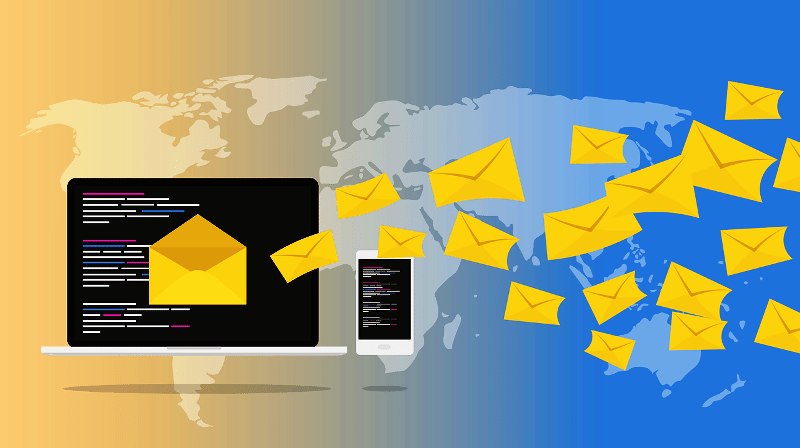If you’re a non-profit, you likely have limited resources and need to maximize your marketing efforts so they’re clean, effective and give you the best ROI possible. After all, you don’t have time, money or valuable contacts to spare! Email marketing can be effective to both attract new leads and nurture existing contacts.
There are lots of fantastic resources out there for creating strong, effective email messages to suit your specific needs. The team at AJA Marketing has helped numerous small organizations and non-profits craft the perfect email voice that will land in inboxes with a solid welcome.
However, there are definitely a few things to avoid at all costs when you’re sending messages to your email list. These missteps in your non-profit email marketing campaign can cost you big time and make even your best-intentioned efforts fizzle out before you get a chance to shine.
Don’t Come on Too Strong with Your Non-Profit Email Marketing
It’s important to match the professional tone of your target audience. After all, you want to prove your services are essential to this specific audience. One of the earliest ways to develop a rapport is to speak the same “language” in your direct communications.
In some cases, a target audience is young, casual and trendy so it might be fine to use a little slang or crack some jokes. Most of the time, though, it’s wise to be judicious in how many bad puns you drop or pop culture references you sprinkle in!
There’s a fine line between having personality and being relatable, and being, well… annoying. Or even offensive. Remember even the most seasoned comedians can have issues with sarcasm landing wrong on an audience! Kristen Schaal, a comedienne and voice actor, once put it bluntly: “Sarcasm doesn’t read sarcastic in print.”
Don’t Be Lazy
Let’s be blunt: you have to put in the effort if you want to have a non-profit email marketing plan that’s even halfway worth your time. Ever get one of those emails with a subject line that’s something like, “TEST: Winter Campaign A”? Or what about an email that opens with, “Dear {{FIRST NAME}}…”?
It seems painfully obvious to double-check an email before hitting send on a campaign, but sadly the fact that we’ve probably all gotten these kinds of messages in our inbox before shows how easily they can happen. We recommend slowing down, building in a test that’s sent to a couple different people (the more eyes proofreading important emails, the better!) and even following a checklist of steps before hitting the final “send.”
Going a step further on this, make sure you’ve researched your leads enough to make sure you really are reaching the right individual. Also: if you’ve got a diverse audience with a few different interests– for example, say you want to reach students, regular donors, and retirees… create different messages. Don’t copy/paste when these different segments have unique priorities and concerns. Be sure to take time to personalize and create specialized messages, because that personal touch really connects with the person on the other end of the email.
Don’t Use a Guilt-Trip
A colleague of ours recently shared an email she’d received from a non-profit charity and said, “I’ve never hit that ‘Unsubscribe’ link so fast before.” Essentially, the email’s tone tapped into shaming and guilt to make this person feel terrible for not donating to a recent campaign.
In this case, the email subject line alone was cringe-worthy: It read, “Not angry, just disappointed.”
It got worse. In the body of the email, the charitable organization went on to complain about the lack of interest in their campaign, and how they expected “good donors to step up, but they didn’t.” From there, the sender painted a doom and gloom picture about how “Nobody… literally NOBODY” (yes, with all caps!) had stepped up to help and now the cause was going to be doomed.
Needless to say, never use this tactic as a call-to-action (CTA)! Making your audience feel bad for not working with you is never a smart way to connect and build a solid relationship. In fact, it’s actually abusive.
Instead, share positive stories. If you’re trying to raise awareness about a cause, determine how you can make your audience feel good about working with you. Testimonials can be great; so can short videos with professional images and upbeat messaging. And try the “soft ask” in your CTA. This could be something like, “Read more about how you can help” or “More success stories” so the audience continues on a journey with you before you solicit anything.
Remember that keys to strong non-profit marketing are to approach all your efforts from “how we can help YOU” rather than “how can you help us?” Keep in mind that your messages should educate, offer valuable content and do something to help you develop a relationship.
If you’d like some guidance on your email marketing campaigns and want to avoid the three mistakes we mention above, get in touch with us. We can tailor our services to what you need so you send out emails that keep you in the best possible light! CLICK HERE to schedule a “Free Fifteen” consult today.

